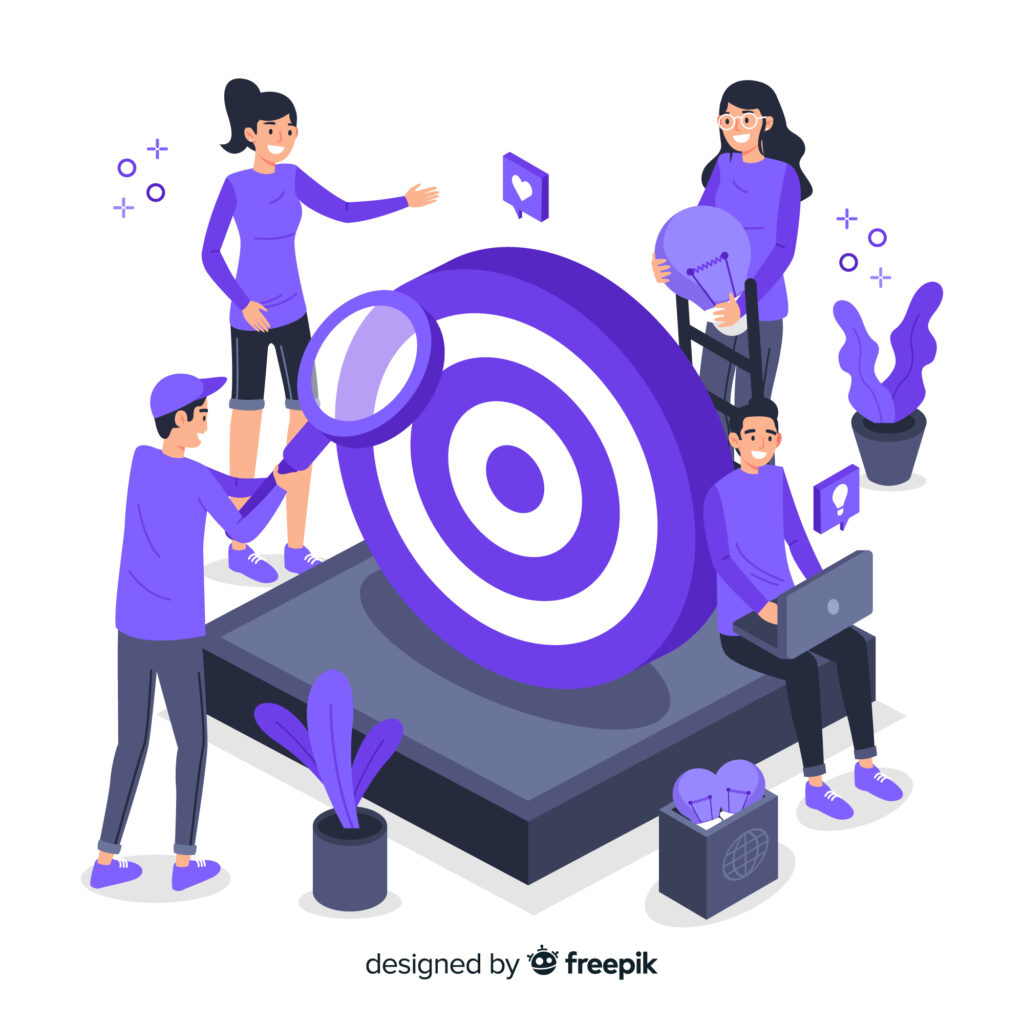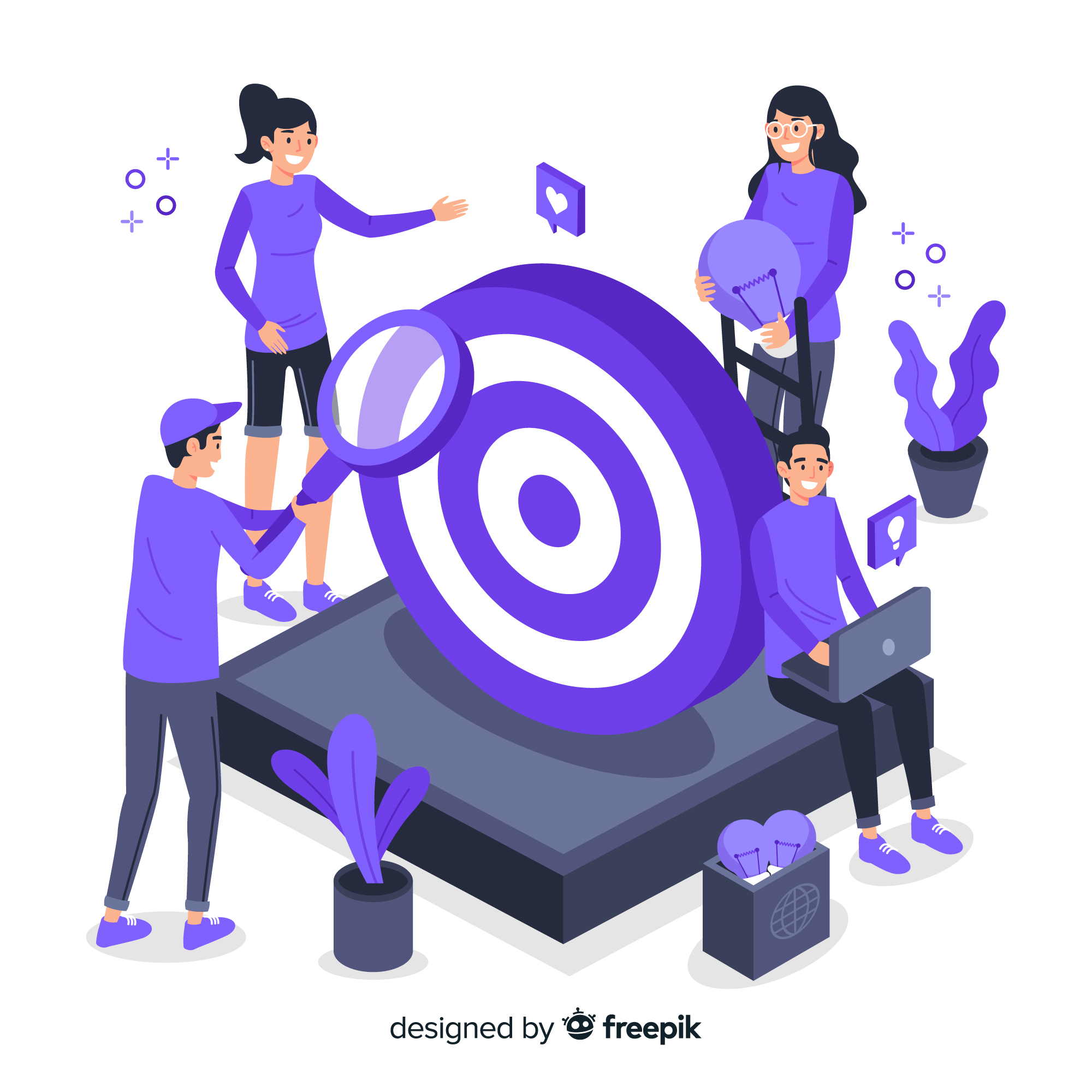In the ever-evolving landscape of digital advertising, achieving success hinges on the ability to connect with the right audience at the right time. One of the pivotal strategies that can make or break an advertising campaign is audience segmentation. In this comprehensive guide, we will demystify the intricacies of audience segmentation in ads, exploring the significance of targeting success and providing actionable insights for optimizing your campaigns.

Understanding the Essence of Targeting Success
The Power of Precision:
Targeting success is not merely a buzzword; it’s a strategic imperative. In a digital ecosystem saturated with content, businesses must cut through the noise to reach their ideal audience. Audience segmentation, the process of dividing a broad audience into smaller, more manageable segments based on shared characteristics, preferences, and behaviors, lies at the heart of targeting success.
Key Statistics:
According to a study by Epsilon, 80% of consumers are more likely to make a purchase when brands offer personalized experiences.
Research from HubSpot indicates that personalized emails have a 6x higher transaction rate than non-personalized ones.
The Foundations of Effective Audience Segmentation
1. Demographic Segmentation:
Segmenting audiences based on demographic factors such as age, gender, income, education, and occupation provides a foundational understanding of who your audience is. This information helps tailor messages that resonate with specific demographic groups.
2. Geographic Segmentation:
Understanding the geographical locations of your audience allows for hyper-localized targeting. This can be crucial for businesses with physical storefronts or those offering region-specific promotions.
3. Psychographic Segmentation:
Delving into the psychographics of your audience involves analyzing their values, interests, lifestyles, and personality traits. This deeper understanding enables the creation of more emotionally resonant campaigns.
4. Behavioral Segmentation:
Analyzing user behavior, including purchase history, online interactions, and engagement patterns, allows for the identification of distinct segments. Behavioral segmentation is particularly powerful for predicting future actions and tailoring content accordingly.
5. Technographic Segmentation:
For businesses in the tech space, understanding the technology stack and preferences of your audience is essential. This includes the devices, software, and platforms they use, influencing the optimization of your digital presence.
6. Contextual and Situational Segmentation:
Considering the context in which users interact with your brand is vital. Are they browsing at work, during their commute, or at home? Tailoring messages to align with situational contexts enhances relevance and engagement.
The Significance of Targeting Success in Ads
1. Increased Relevance:
Targeting success ensures that your ads resonate with the specific needs and preferences of your audience. When users encounter content that aligns with their interests, they are more likely to engage and convert.
2. Cost Efficiency:
Effective audience segmentation minimizes the wastage of resources on irrelevant audiences. By targeting those most likely to respond positively to your ads, you optimize your advertising spend, achieving a higher return on investment (ROI).
3. Improved Engagement:
Personalized and relevant content leads to higher levels of engagement. Whether it’s a click, a like, or a share, engaged audiences are more likely to interact with your brand and become advocates.
4. Enhanced Customer Loyalty:
Building a loyal customer base requires understanding and meeting the unique needs of different segments. Targeted campaigns that address specific pain points and aspirations foster a sense of connection and loyalty.
5. Data-Driven Decision Making:
Audience segmentation relies heavily on data analysis. Utilizing data-driven insights allows marketers to make informed decisions, refine strategies, and continuously optimize campaigns for better results.
Strategies for Successful Audience Segmentation in Ads
1. Utilize Advanced Analytics Tools:
Invest in analytics tools that provide in-depth insights into user behavior, preferences, and interactions. Platforms like Google Analytics, Facebook Insights, and customer relationship management (CRM) systems offer robust features for audience analysis.
2. Implement Machine Learning and AI:
Leverage machine learning algorithms and artificial intelligence to analyze vast datasets and identify patterns. These technologies can automate the segmentation process, uncovering nuanced audience segments that may be challenging to identify manually.
3. Dynamic Content Personalization:
Implement dynamic content personalization to tailor your messaging in real-time based on user behavior. Dynamic ads and personalized recommendations enhance the user experience and increase the likelihood of conversion.
4. Survey Your Audience:
Directly seeking feedback from your audience through surveys provides valuable qualitative data. Understand their preferences, pain points, and expectations to refine your segmentation strategy and create more targeted campaigns.
5. Segmentation Based on Customer Journey:
Map out the customer journey and identify key touchpoints. Tailor your ads to align with each stage of the journey, ensuring that your messaging is contextually relevant and guides users seamlessly through the conversion funnel.
6. A/B Testing for Segments:
Conduct A/B testing to assess the effectiveness of different ad creatives, messages, and targeting strategies within each segment. Iteratively refine your approach based on the performance of each variant.
Challenges and Solutions in Audience Segmentation
Challenges:
Limited Data Accuracy:
Incomplete or inaccurate data can hinder effective audience segmentation. Regularly audit and update your data sources to ensure accuracy and reliability.
Overlooking Micro-Segments:
Focusing solely on broad segments may result in overlooking micro-segments with distinct characteristics. Utilize advanced analytics to identify and target niche segments for more personalized campaigns.
Solutions:
Data Cleansing and Validation:
Implement robust data cleansing and validation processes to maintain accurate and reliable data. Regularly update customer profiles and ensure that data collection methods align with privacy regulations.
Micro-Segmentation Exploration:
Explore micro-segments within your broader audience to uncover nuanced characteristics and preferences. Machine learning algorithms can assist in identifying subtle patterns that may not be apparent through manual analysis.
The Future of Audience Segmentation in Ads
As technology continues to advance and consumer behavior evolves, the future of audience segmentation holds exciting possibilities for marketers.
1. Predictive Analytics:
The integration of predictive analytics will enable marketers to anticipate future behaviors and preferences. Predictive modeling, powered by machine learning, will enhance the accuracy of segmentation strategies.
2. Hyper-Personalization:
The trend towards hyper-personalization will intensify, driven by advances in AI and data analytics. Marketers will have the capability to deliver individualized content and experiences tailored to the unique preferences of each user.
3. Privacy-Centric Segmentation:
With growing concerns about data privacy, the future will see an emphasis on privacy-centric segmentation. Marketers will need to strike a balance between personalization and respecting user privacy, potentially relying more on first-party data.
4. Integration with Emerging Technologies:
Integration with emerging technologies such as augmented reality (AR) and virtual reality (VR) will open new avenues for immersive and personalized ad experiences. Marketers can leverage these technologies to engage audiences in innovative ways.
Conclusion
In the quest for targeting success, audience segmentation emerges as a powerful ally for marketers seeking to optimize their advertising efforts. By understanding the unique characteristics and preferences of different audience segments, businesses can create personalized and impactful campaigns that resonate with their target audience.
As technology continues to advance, the integration of advanced analytics, machine learning, and predictive modeling will further refine the art of audience segmentation. Marketers who embrace these innovations, prioritize data accuracy, and adapt their strategies to evolving consumer behavior will be well-positioned to achieve sustained success in the dynamic landscape of digital advertising.
Remember, targeting success is not a one-time endeavor but an ongoing journey of refinement and adaptation. Stay agile, stay data-driven, and unlock the full potential of audience segmentation to elevate your advertising campaigns to new heights.
Related Articles:
1. Demystifying Target Audience Analysis
2. Demystifying Google Search Advertising: What You Need …
3. What is Audience Targeting?–Demystifying the World of Tech




